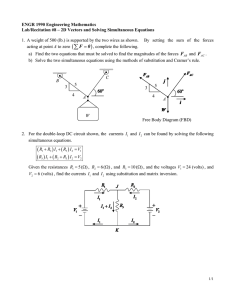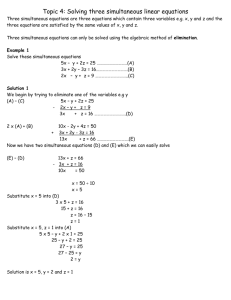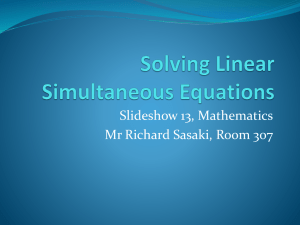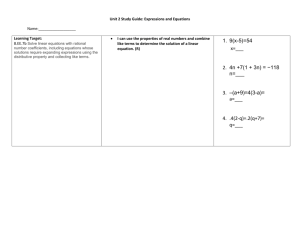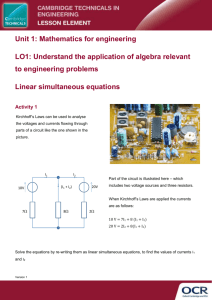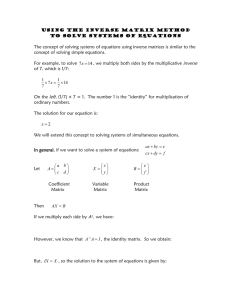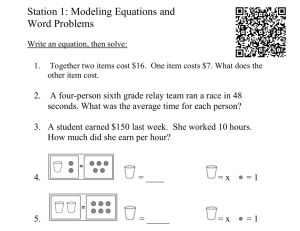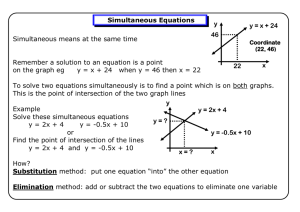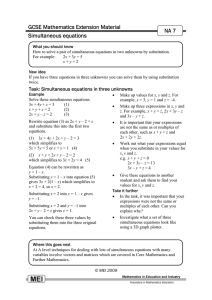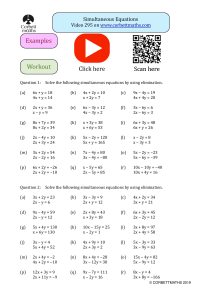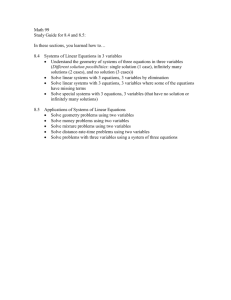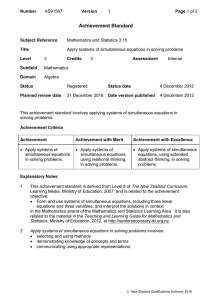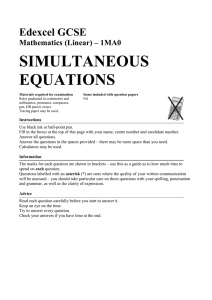Algebra: Simultaneous Equations
advertisement
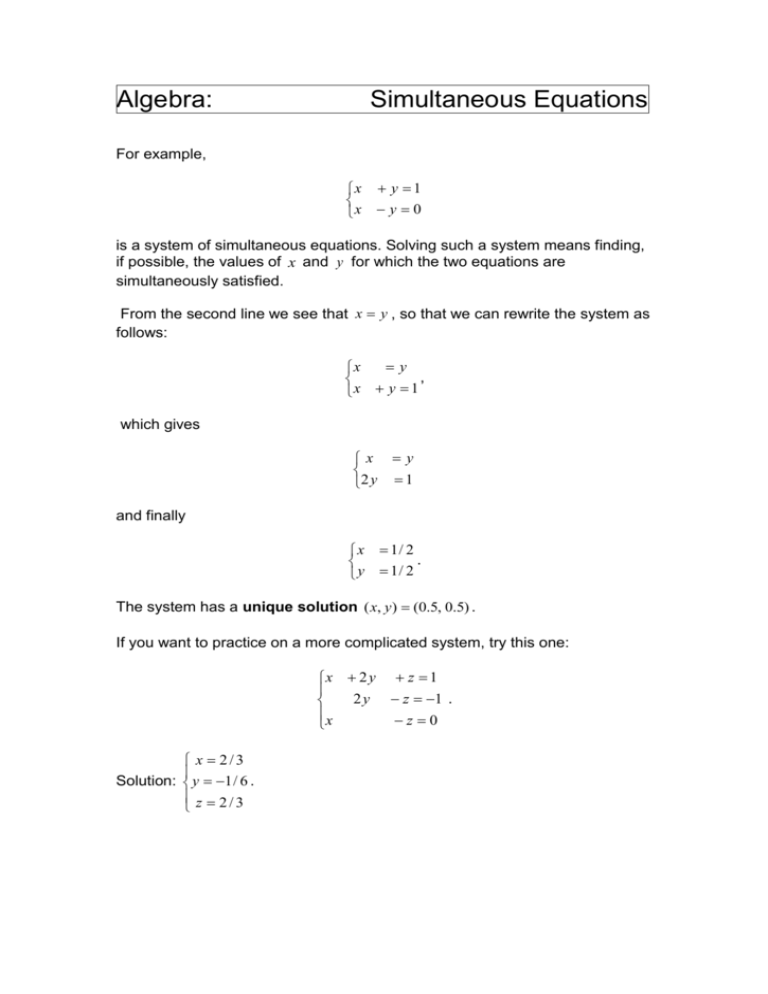
Algebra: Simultaneous Equations For example, x y 1 x y 0 is a system of simultaneous equations. Solving such a system means finding, if possible, the values of x and y for which the two equations are simultaneously satisfied. From the second line we see that x y , so that we can rewrite the system as follows: y x , x y 1 which gives x y 2 y 1 and finally x 1/ 2 . y 1/ 2 The system has a unique solution ( x, y ) (0.5, 0.5) . If you want to practice on a more complicated system, try this one: x 2 y z 1 2 y z 1 . x z0 x 2/3 Solution: y 1 / 6 . z 2/3 Sometimes a system of simultaneous equations can have more than one solution. Consider the system 2 x 2 y 0 . x y0 It is not hard to see that each pair of numbers ( x, y ) such that x y satisfies the system. The system has therefore infinitely many solutions. Try to solve this one: x y z0 x y z0 . 2 x 2z 0 Solution: Each triplet ( x, y, z ) such that x z and y 0 satisfies the system. Let’s modify the system above a little: x y z 1 x y z 1 . 2 x 2z 0 This time the triplet ( x, y, z ) would have to satisfy x z, y 1, y 1, which is impossible. The last system therefore has no solution.
